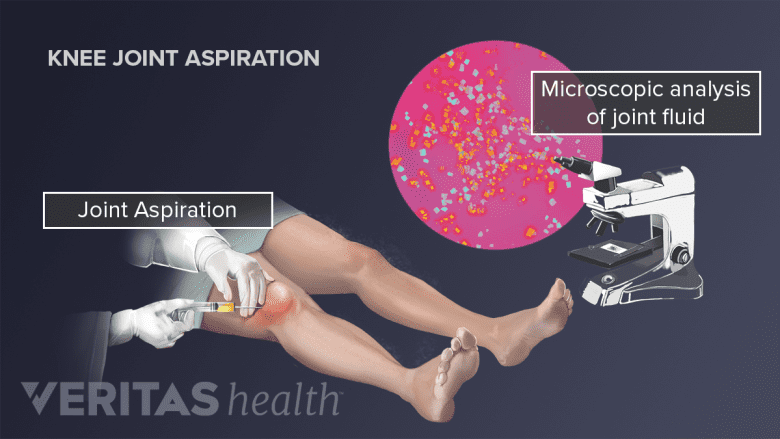Treatment of a dislocated knee will vary depending upon the severity of the injury. For example, some individual’s kneecaps may relocate before they make it to the hospital, while others will remain severely out of place until aided by a physician.
In This Article:
Nonsurgical Treatment for a Dislocated Patella

Joint aspiration involves using a syringe to remove excess fluid from the knee joint.
The vast majority of dislocated kneecaps can be treated nonsurgically, though some extreme cases may require surgical intervention. In most cases, several nonsurgical treatment options will be attempted before considering surgery to realign the kneecap. Common nonsurgical treatments for a dislocated patella may include:
-
Pain medication. Non-steroidal anti inflammatory medications, such as ibuprofen or naproxen may be recommended or prescribed to address both the pain and inflammation. Analgesics (such as acetaminophen), pain medications that do not have anti inflammatory properties, may also be prescribed in order to relieve severe pain.
-
RICE. As a first response treatment to injury, an athlete will be advised to rest, ice, compress and elevate his or her kneecap.
-
Reduction. Sometimes the kneecap will move back into place on its own as the leg in moved. If it hasn't done this, a physician may try to move the kneecap manually while the leg is gradually flexed until it's straight.
-
Joint aspiration. If large amounts of excess fluid are present in the knee joint, a doctor may aspirate the joint by using a syringe to remove this fluid. If the injury has involved an open wound, then the fluid may also be used to check for infection.
-
Immobilization. In order to prevent the kneecap from being re-dislocated or injured, the athlete’s leg may be placed in an immobilizing cast or brace for a period of time.
-
Crutches. An athlete may also use crutches to reduce pressure on the knee joint and patella.
-
Physical therapy. An array of stretches and exercise may be prescribed for a predetermined period after treatment in order to strengthen the kneecap and knee joint as a whole.
-
Braces. A physician may advise that a patient wear protective braces on the knee when resuming athletic competition.
In cases of extreme dislocation, surgery may be required to move the kneecap back into place or repair any damaged cartilage, ligaments or tendons in the knee joint.

